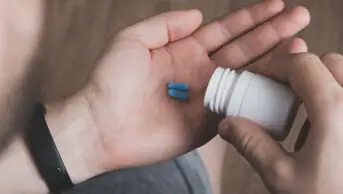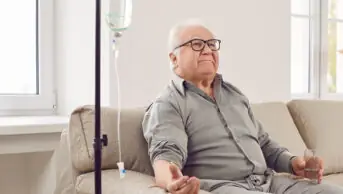I had a remarkable opportunity to rotate through the oncology and haematology services for four months during the second year of my junior residency training at the University Hospitals of Leicester NHS Trust. Working in this specialist field was a different experience compared with general medical wards – it allowed me to gain fascinating expert knowledge and apply it to individual patient cases. I also got to check and release aseptically produced intravenous chemotherapy products in the aseptic laboratory.
The rotation experience
My rotation on this ward was positive. There is a wealth of knowledge to discover, learn and explore in this ever-evolving field of medical practice.
The beginning of the rotation is the foundation for the forthcoming weeks and it focuses primarily on learning first-hand from our specialist colleagues who have been in the field for many years.
Oncology and haematology specialist pharmacists clinically check and authorise chemotherapy prescriptions, check and release intravenous aseptically produced chemotherapy, and ensure that high-risk drug monitoring is done on the wards in a timely fashion.
During the rotation, I completed the aseptic final assessment, which enabled me to practise unsupervised in the aseptic laboratory. Together with the laboratory work, there was allocated ward time for clinically reviewing drug charts, going through medical notes and speaking to patients. Finally, the rotation also offered opportunities to attend pharmacist- and consultant-led teaching sessions.
Cancer services and pharmacy aseptic manufacturing
Aseptics is a unique subject. It incorporates not only the actual hands-on manufacturing processes in the aseptic laboratory, but also the development, implementation and maintenance of standard operating procedures and other clinical governance policies to ensure quality is assured every time.
Collaborative effort between apprentices, technicians and pharmacists is vital. There are numerous steps between the moment a prescription is authorised by an oncology or haematology pharmacist and the final intravenous chemotherapy product reaching the ward, including worksheet printing, label production, vials selection, aseptic manufacturing, and final checking and releasing of the product. And the challenges do not end here. For example, the transportation stage is crucial for some drugs such as azacitidine, which has only a 45-minute expiry window at room temperature.
Cancer clinical trials and pharmacy services
The number of cancer clinical trials being conducted in paediatric and adult oncology and haematology continues to grow, and medicine experts with specialist knowledge around pharmaceutics and pharmacology are heavily involved. Clinical trial pharmacists work alongside a dedicated clinical trials pharmacy and medical team. They are responsible for a number of things, including clinically authorising trial prescriptions, getting involved in the development of the clinical trial protocols, handling and storing investigational medicinal products, to name a few.
Developing my practice
After the oncology/haematology rotation, I have a better understanding of the reasons for prescribing so many antivirals, antifungals, antibiotics and other medicines, such as granulocyte colony stimulating factors (e.g. filgrastim). Having also worked on the wards for four months alongside some amazing teaching practitioners, I familiarised myself with the treatment guidelines for many oncological emergencies, such as neutropenic sepsis, spinal cord compression, post-chemotherapy-related severe nausea and vomiting, hypercalcaemia, tumour lysis syndrome and many others. Additionally, I am grateful for the knowledge I gained in pharmaceutics and pharmacology of the various cancer drugs.
To follow patients through their journey, understand their experience and help them at each stage is truly an enlightening life experience.


